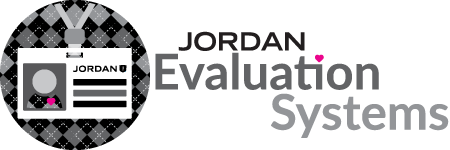Planning
Preparing Instruction
Indicator 57 – Student-Directed Learning
UETS 1 – The teacher understands cognitive, linguistic, social, emotional, and physical areas of student development.
UETS 3 – The teacher works with learners to create environments that support individual and collaborative learning, positive social interactions, active engagement in learning, and self-motivation.
Effective teachers provide opportunities for students to direct their own learning and to participate in planning and designing their own learning activities. Student-directed learning teaches students how to set goals, prioritize activities, identify and solve real problems. Rather than helping students develop an ability to memorize facts in a textbook, effective teachers should teach students metacognitive and self-evaluative skills, so they can assess what they need to learn in order to solve a problem or complete a project.
IDEAS/SUGGESTIONS:
- Be prepared to show an activity that gives students the opportunity to participate in a project-based assignment. In order for an assignment to qualify as student-directed learning, students must have done one of the following:
- Plan goals, timelines, or priorities
- Determine materials to use
- Identify process needed
- Produce a unique product
- Examples of student-directed activities include:
- Students design their own safety poster.
- Students are expected to complete six center activities in a three-day period. Students choose the order of completion and time spent on each activity to meet the expectation.
- Students in a U.S. history class each pick a state to research for a class state fair. The teacher will provide an outline of required elements, but each student product will be unique.
- Students create a business to learn about supply and demand, sales, purchasing, deficit spending, budget management, advertising, inventory, consumer satisfaction, etc.
- The class works in small groups to explore different portions of a unit to develop a prospective lesson. They are responsible for selecting instructional materials and planning a presentation of information to the class.
- Students create an environmental project that integrates all the skills they learned in academic areas to plan, budget, advertise, and implement.
- Be prepared to show how you individualized a student-directed learning experience based on the needs of individual learners. Examples of how teachers could individualize the learning activities described above are as follows:
- Students design their own safety poster.
- An ELL student is expected to do illustrations with limited text while other students are expected to include detailed descriptions
- Different element expectations for different students based on individual levels
- Partnering some students with another student on a different level
- A pre-formatted poster with descriptions already included for some students
- Students are expected to complete six center activities in a three-day period. Students choose the order of completion and time spent on each activity to meet the expectation.
- Requiring a student to complete the writing center before moving to the other centers, based on needed writing practice
- Providing different levels of reading selections on the same topics for students reading at lower levels
- Expecting some students to only complete three of the centers in the same time period
- Students in a U.S. history class each pick at state to research for a class state fair. The teacher will provide an outline of required elements, but each student product will be unique.
- Providing different levels of resources and research material for students on different reading levels
- Different element expectations for different students based on individual levels
- Breaking the assignment down into smaller segments for a student that has organizational needs
- Different presentation options for individual students (e.g. present to a smaller group or individually, video taped, or voice recorded)
- Students create a business to learn about supply and demand, sales, purchasing, deficit spending, budget management, advertising, inventory, consumer satisfaction, etc.
- Differentiated groupings to complete the project
- Differentiated problem-solving tools (templates, graphic organizers, strategies)
- Provide additional instruction or information for specific individuals or groups of students
- The class works in small groups to explore different portions of a unit to develop a prospective lesson. Each group is responsible for selecting instructional materials and planning a presentation of information to the class.
- Pre-determined groups based on needs
- Intentionally assigning portions of the unit being worked on to certain groups of students based on the difficulty of the material
- Providing differentiated reading selections used in the learning experience
- Students create an environmental project that integrates all the skills they learned in academic areas to plan, budget, advertise, and implement.
- Using a checklist showing student mastery of concepts and/or skills to devise a scoring guide for individual students
- Differentiated templates or graphic organizers for specific students
- Providing materials and prompts, with some answers already provided, for a special-needs student
- Using differentiated rubrics for scoring groups on different levels
- Be prepared to show data that supports the individualization incorporated into student-directed activities. Examples of supporting data may be one of the following:
- Record of reading/writing/math mastery levels
- English language proficiency levels
- Summative and/or formative assessment data
- Behavioral records used to develop student groupings
- IEP goals
